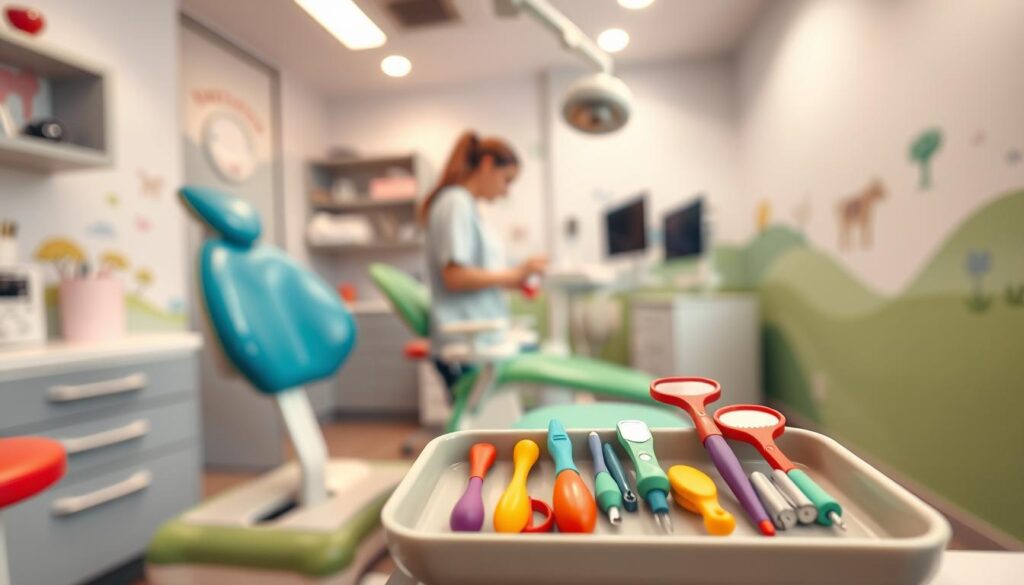As a parent, ensuring your child’s oral health is crucial, but the cost of dental care can be a concern, especially without insurance. The average cost for a routine pediatric dentist visit can range between $30 and $60. However, the total cost depends on various factors, including the type of services performed during the visit.
I will provide an overview of what to expect when taking your child to a dentist without insurance coverage. Understanding the cost of child dental care is essential for family budgeting and maintaining your child’s oral health. Regular dental care is a necessary investment, despite the costs involved.
Key Takeaways
- Understand the average cost of a pediatric dentist visit without insurance.
- Learn about the factors that influence the overall cost of pediatric dental care.
- Discover the typical range of expenses for common pediatric dental procedures.
- Find out why regular dental care for children is a necessary investment.
- Get insights into navigating the financial aspects of pediatric dental care.
The Reality of Pediatric Dental Costs Without Insurance
Understanding the costs associated with pediatric dental care without insurance is crucial for parents. Regular dental visits are essential for maintaining a child’s oral health, but the expenses can be daunting for families without insurance coverage.
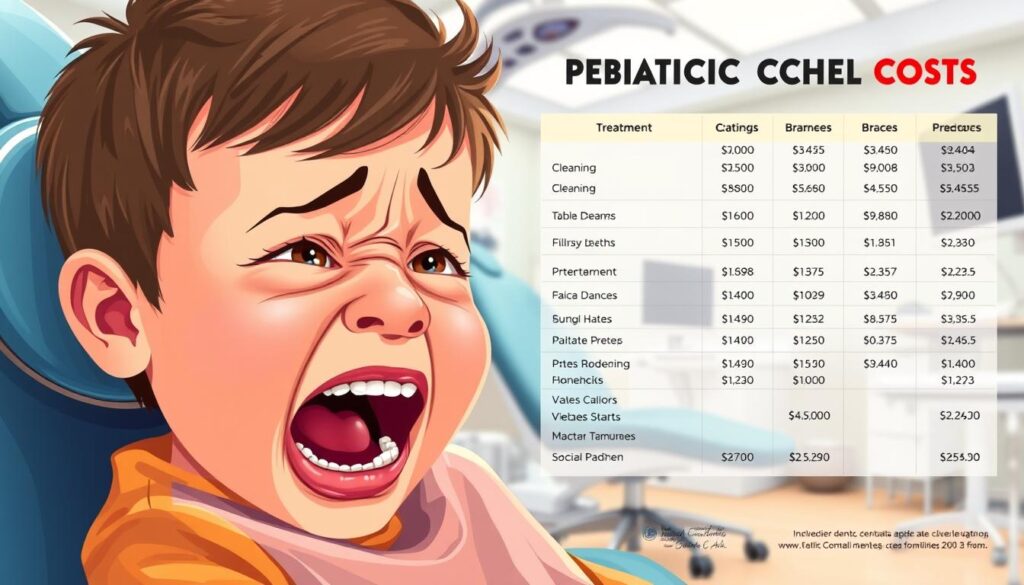
Seeing a dentist regularly can save money in the long run. By catching cavities early and receiving regular advice from a pediatric dentist, parents can avoid more costly treatments later on.
Average Cost Range for Basic Pediatric Dental Services
Basic pediatric dental services can vary in cost, but understanding the average cost range can help families plan. The costs for routine check-ups, cleanings, and other preventative services are typically within a manageable range.
- Routine check-ups and cleanings: $65-$200
- X-rays and diagnostic services: $25-$200
- Preventative treatments: $20-$60 per service
Why Pediatric Dental Care Is a Necessary Investment
Pediatric dental care is not just an expense; it’s a vital investment in a child’s overall health and well-being. By establishing good dental habits early, parents can prevent more serious health issues and costly treatments down the line.
Early intervention through regular dental visits can prevent more costly treatments later. Moreover, good dental habits contribute to proper nutrition, speech development, and self-confidence in children.
How Much Is a Pediatric Dentist Visit Without Insurance
Navigating the costs of pediatric dental care without insurance requires a clear understanding of the services involved. Understanding these costs can help parents plan and budget for their child’s dental care.
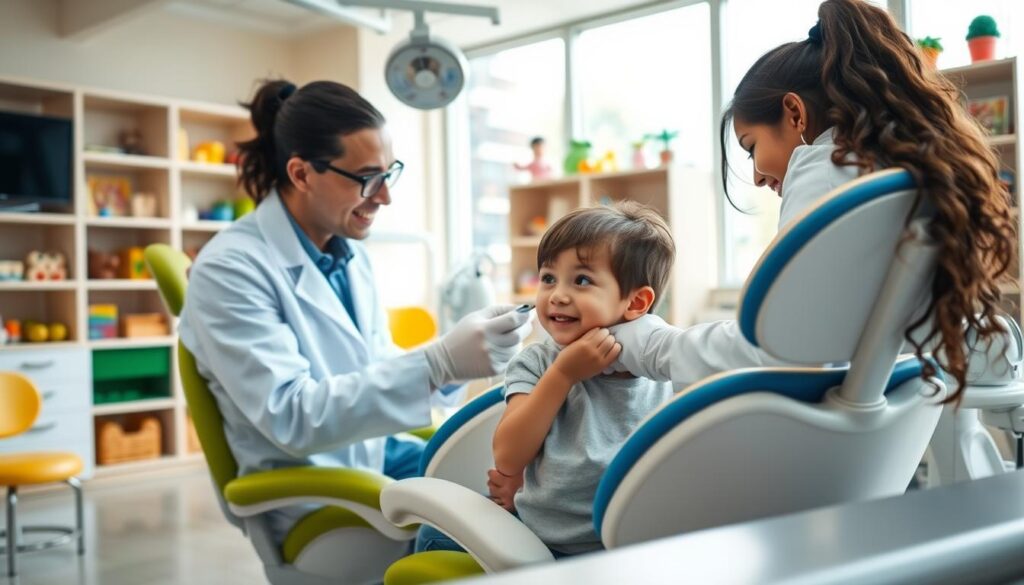
Routine Check-ups and Cleanings: $65-$200
Routine check-ups and cleanings are fundamental to maintaining good oral health in children. These visits typically include a visual examination, cleaning, and sometimes a fluoride treatment. The cost can range from $65 to $200, depending on the location and the pediatric dentist’s fees.
X-rays and Diagnostic Services: $25-$200
X-rays and other diagnostic services are crucial for identifying oral health issues early. The cost of these services varies widely, from $25 to $200, based on the type and frequency of the X-rays. Diagnostic services help pediatric dentists detect problems that are not visible during a routine examination.
Preventative Treatments: $20-$60 per Service
Preventative treatments, including fluoride applications and dental sealants, play a significant role in preventing cavities and other oral health issues. Fluoride treatments, which strengthen tooth enamel, typically cost between $20 and $50 per application. Dental sealants, applied to cavity-prone molars, can cost $30 to $60 per tooth and are effective for six years or more. These preventative treatments can save money by reducing the need for more extensive procedures later.
By understanding the costs associated with these services, parents can better prioritize their child’s dental care needs, even on a limited budget.
Common Pediatric Dental Procedures and Their Costs
Understanding the costs associated with common pediatric dental procedures can help parents prepare financially for their child’s dental care needs.
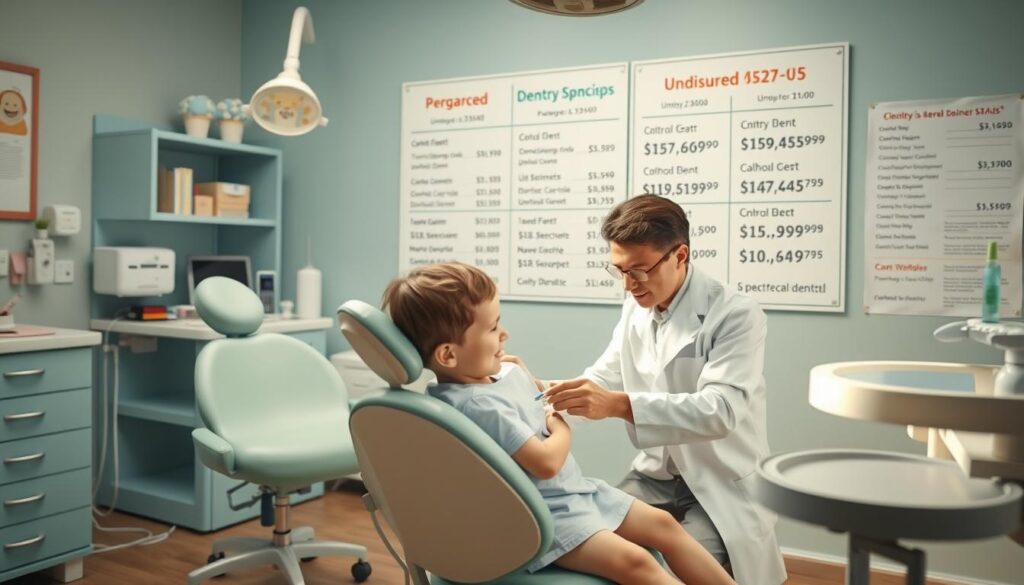
Fillings and Cavity Treatments
Fillings and cavity treatments are common procedures that can range from $75 to $300 per tooth, depending on the material used and the complexity of the procedure. As a parent, it’s essential to understand that these treatments are crucial for preventing further dental issues.
Dental Sealants
Dental sealants are a preventive measure that can cost between $30 to $60 per tooth. They are applied to protect the teeth from decay, especially in children.
Fluoride Treatments
Fluoride treatments are another preventive measure, costing $20 to $50. They help strengthen tooth enamel and prevent decay.
Tooth Extractions: Cost Considerations
Tooth extractions, necessary in cases of damaged or overcrowded teeth, can vary significantly in cost. Simple extractions range from $75 to $200, while surgical extractions can cost between $200 to $600. The complexity of the procedure and the need for sedation can affect the overall cost.
It’s crucial for parents to discuss the necessity and costs of these procedures with their pediatric dentist to understand the best options for their child’s dental health.
Age-Specific Dental Care Costs
Understanding the costs associated with pediatric dental care at different stages of a child‘s development is crucial for parents.
As children grow, their dental needs evolve, requiring different levels of care and associated costs.
Infants and Toddlers (Under 2 Years)
For infants and toddlers, dental visits focus on preventive care and parental guidance. The cost for these initial visits can range from $65 to $200, depending on the dentists‘ fees and location.
Young Children (2-6 Years)
As children grow, so do their dental needs. Routine check-ups, cleanings, and potentially, treatment for early signs of dental issues are common. Costs for these services can vary, with check-ups and cleanings ranging from $65 to $200.
School-Age Children (6-12 Years)
For school-age children, dental care often involves monitoring the loss of primary teeth and the eruption of permanent ones. If braces are needed, the initial stage of treatment can cost $4,000 or more. Additionally, preventive measures like dental sealants are applied to newly erupted molars to prevent decay.
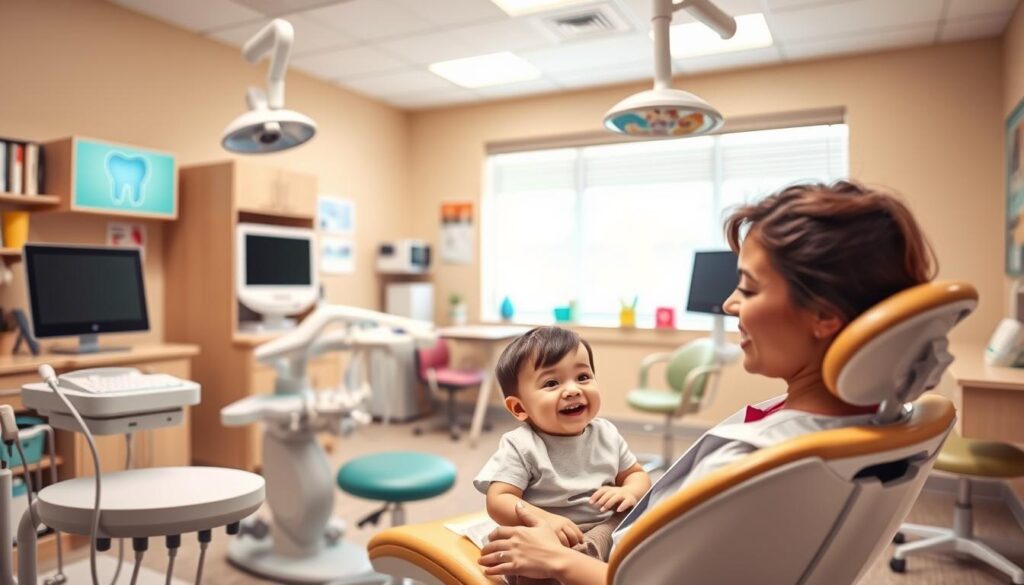
Orthodontic Treatment Costs for Children
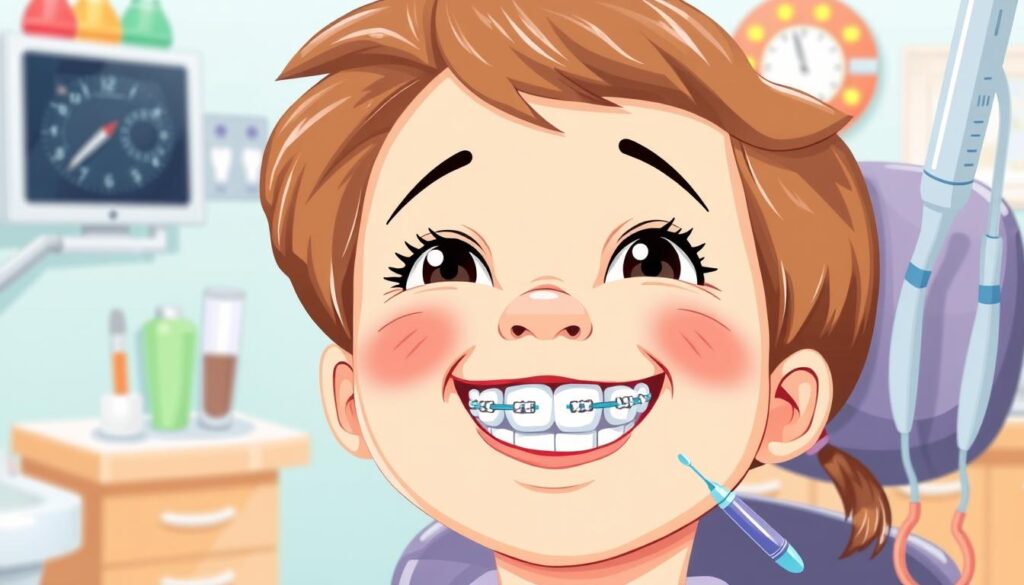
When considering orthodontic treatment for children, understanding the costs involved is crucial for making informed decisions. Orthodontic care can significantly impact a child’s dental health and overall well-being.
Traditional Braces: $3,000-$7,000
Traditional braces are a common orthodontic treatment option for children. The cost can range from $3,000 to $7,000, depending on the complexity of the case and the duration of the treatment. This cost typically includes the initial consultation, braces installation, and follow-up appointments.
Invisalign and Alternative Options
For children under 13, Invisalign can be a viable option if their alignment issues are not too complex. The cost of Invisalign treatment typically ranges from $3,500 to $8,000. Other options include ceramic braces, lingual braces, and early intervention appliances, each with its own price range. The choice of orthodontic treatment depends on the child’s specific needs and the complexity of their dental issues.
Factors Affecting Pediatric Dental Costs
Understanding the variables that affect pediatric dental costs can help parents make informed decisions about their child’s dental care. Several factors come into play when determining the overall cost.
Geographic Location and Practice Setting
The cost of pediatric dental services can vary significantly based on geographic location and the setting of the dental practice. Urban areas tend to have higher costs compared to rural areas due to differences in cost of living and operational expenses. For instance, a dental clinic in a metropolitan area may charge more for dental services than one in a smaller town.
Dentist Experience and Specialization
A dentist’s experience and specialization also play a crucial role in determining costs. Pediatric dentists with advanced training or specialized certifications may charge more for their procedures due to their expertise.
Materials and Technology Used
The type and quality of materials and technology used in dental procedures, such as fillings and other treatments, can significantly impact costs. Advanced technology, like digital x-rays, can increase the cost but may offer better long-term options and more efficient services. As one expert notes, “Investing in quality dental care can lead to better oral health outcomes for children.” 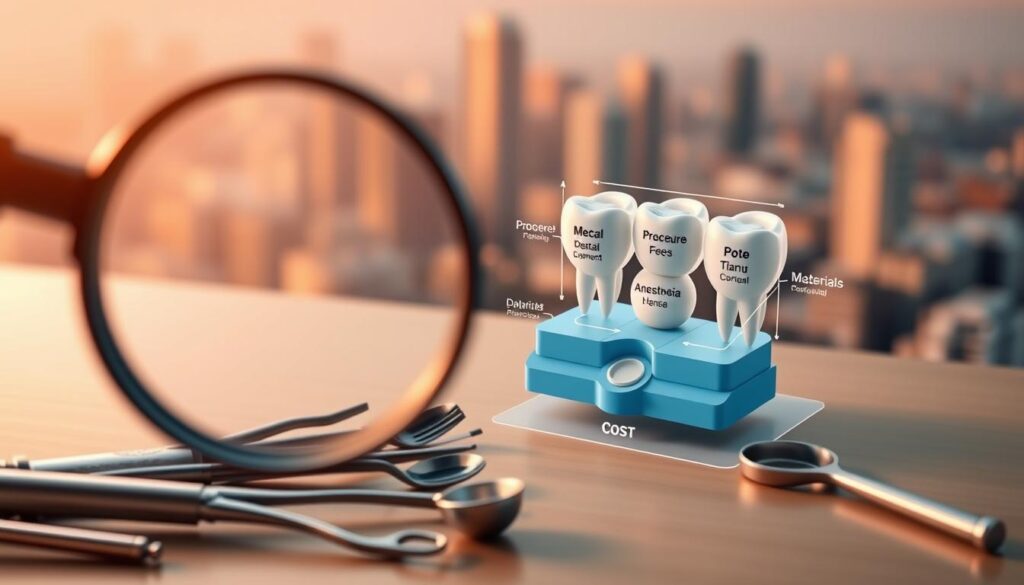
Affordable Alternatives to Dental Insurance

Uninsured families can find it challenging to provide their children with necessary dental care. Fortunately, there are affordable alternatives to dental insurance that can help.
Dental Discount Plans: How They Work
Dental discount plans offer a cost-effective way to access dental services at reduced rates. These plans are not insurance but can significantly lower the cost of pediatric dental care.
Government Programs: CHIP and Medicaid
Government programs like CHIP and Medicaid provide health coverage, including dental care, to eligible children. These programs can be a vital resource for families seeking affordable dentistry options.
Dental Schools and Community Health Centers
Dental schools and community health centers offer reduced-cost services. At these facilities, care is provided by supervised students, often at 30-50% less than private practices.
Finding an Affordable Pediatric Dentist
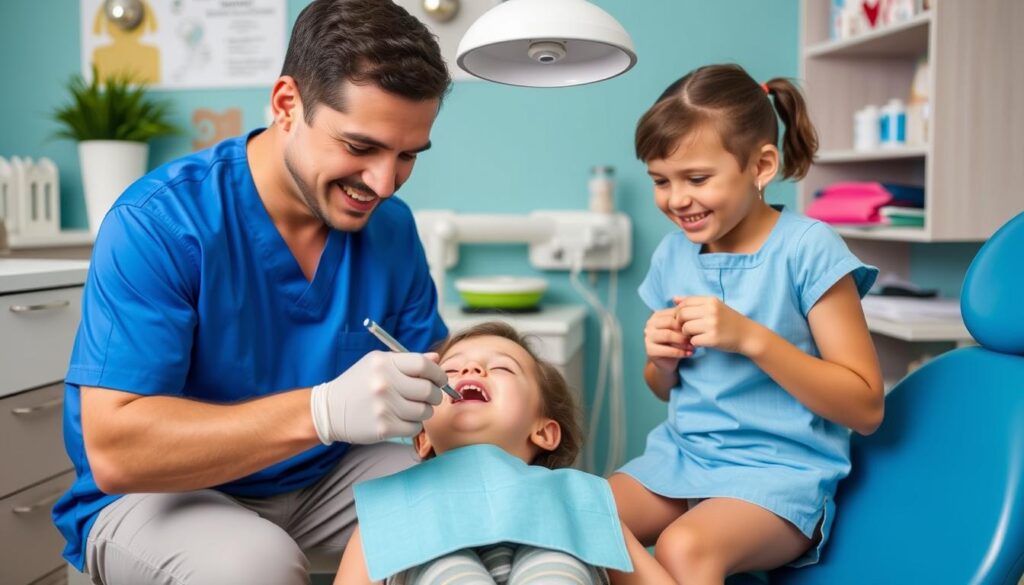
Affordability is a crucial aspect of pediatric dental care that parents should not overlook. Ensuring your child receives quality dental care without breaking the bank requires some research and planning.
Questions to Ask About Costs and Payment Options
When searching for a pediatric dentist, it’s essential to inquire about costs and available payment options. Parents should ask about the costs associated with routine check-ups, diagnostic services, and any necessary treatments. Some dentists may offer payment plans or financing options to make procedures more affordable.
Negotiating Fees and Payment Plans
Negotiating fees with dental providers can be done respectfully by discussing your financial constraints and asking about possible discounts or alternative payment arrangements. Some pediatric dental practices offer bundling services or discounts for paying in advance. It’s also crucial to get any payment agreements in writing before proceeding with treatment to avoid misunderstandings.
Creating a dental care budget that accounts for both preventative care and unexpected treatments is vital. Parents can explore options like dental discount plans, government programs such as CHIP and Medicaid, or visiting dental schools and community health centers for affordable care.
Conclusion: Balancing Cost and Quality in Children’s Dental Care
In wrapping up our discussion on pediatric dental costs without insurance, we highlight the need for affordable, quality dental care. Regular checkups and preventive care are crucial for maintaining healthy teeth and avoiding costly problems. By understanding the costs associated with various pediatric dental services, parents can make informed decisions. Exploring options like dental discount plans, government programs, and negotiating fees can help make health care more accessible.
Investing in quality dental care early on can prevent more expensive treatments later, making it a vital aspect of a child’s overall health. By prioritizing care and seeking affordable options, parents can ensure their child develops good oral hygiene habits for life.
